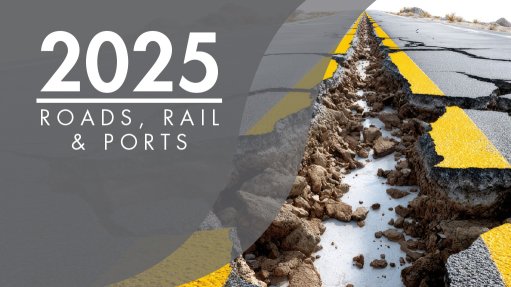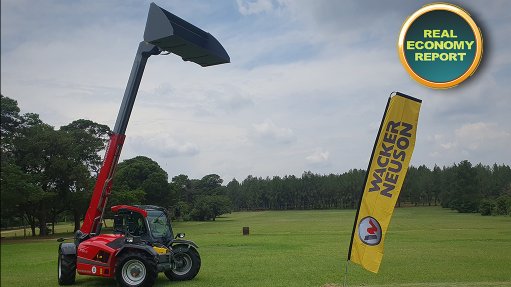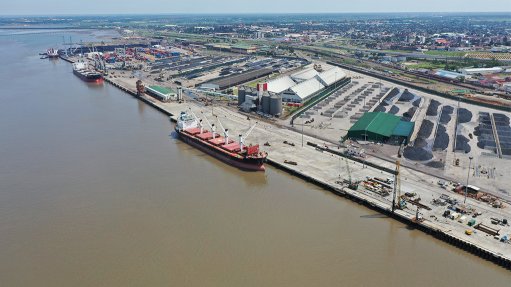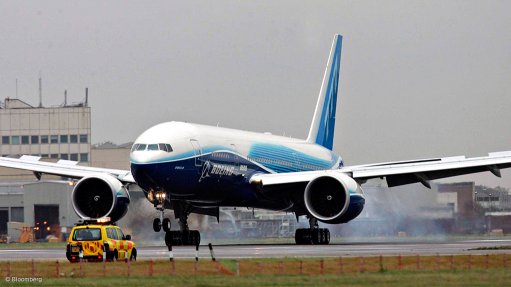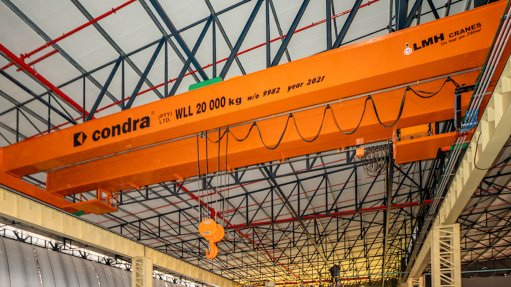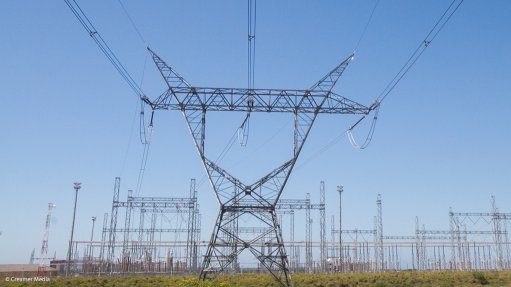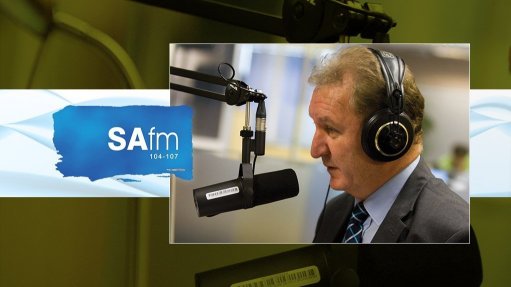South Africa is losing its trade competitiveness edge
Enormous investments are being made in ports, rail and transport logistics in Southern Africa, as well as more broadly in Africa, including by international companies and consortia.
"Global companies that are investing in infrastructure across the continent. This is happening because of the industrialisation of the region. Critical minerals are playing a major role, as are energy security and independence, and the growth of consumers," research and consulting company Africa House Market Access and Research director Duncan Bonnett said last week.
Speaking at a Transport Forum event, he pointed out that there were about 2 500 significant projects under consideration or development in Southern African countries, and about half of them are power, and oil and gas projects.
South Africa has 31% of this project basket, but there seems to be some stasis in terms of realising projects, he said.
There is lots of activity in Mozambique. While some of the projects have stalled in the far north of the country, but there is about $3.5-billion of gas-related infrastructure that is being developed around Maputo, Bonnett pointed out.
He added that Namibia was on the cusp of becoming the energy centre of Southern Africa, with about $50-billion of investments being made in green hydrogen, oil, gas and related ancillary infrastructure.
Further, he noted that developments in Angola, the Democratic Republic of Congo, Mozambique, Namibia and Tanzania would impact on South Africa's economy, as it makes more economic sense to export copper through the ports of Lobito and Beira than through the Port of Durban.
"Energy is driving the change in the region. Energy requires inputs, whether turbines, or structural steel and copper cables. What we are seeing in Southern Africa is an enormous move towards things like solar and wind power."
The East African region will see about $200-billion worth of capital investment over the next 10 to 15 years, and that pull of investment creates a multiplier or halo effect, where other infrastructure is upgraded and developed, Bonnett highlighted.
Namibia has a green hydrogen and a oil and gas project of about $12-billion each, and then another $10-billion green hydrogen project, for which offtake agreements have already been signed.
In addition to these developments is the development of ancillary infrastructure to support these projects, namely ports, roads and rail, he added.
South Africa is a key developer in the renewable energy project space, but there is also lots of renewable energy being put into the development pipeline in the rest of the region.
"There is an opportunity to not only develop the domestic market, but the regional renewable energy market.
"South Africa has an opportunity to be a supplier of technology into renewable energy systems. This is not only rooftop systems, but almost every mining house in South Africa and the region is looking at deploying their own renewable and battery storage systems," he noted.
A mine in Zambia is considering the installation of a 425 MW to 450 MW system because it spends $500 000 a year on diesel to keep the mine operating. It could repay the cost of the combination of solar, wind and battery storage system within five years, Bonnett illustrated.
The risk South Africa faces is not only losing out on the logistics flows, but also losing out on the backhaul of chemicals and mining equipment travelling towards the mines, which could impact on suppliers in South Africa who stand the risk of being cut out of the flows, he highlighted.
Geopolitical tensions are also leading to other countries moving to secure critical mineral resources and, through investing in logistics channels, rerouting them to their economies.
"Of the about 190 operating or developing critical minerals mines, the bulk of them are in the Southern African region, or close to the region, including some in South Africa.
"This is something we need to take cognisance of because it is starting to have a material impact on the way trade flows in the region," he said.
Prior to 2020, about 90% of the copper from the DRC and Zambia flowed through the Port of Durban, and today it is about 35% and about 35% through Dar es Salaam, with the rest being exported through Beira, Walvis Bay and others.
"We did a study for a chemicals manufacturer on the copper potential in Southern Africa. A few years ago, this was about three-million tonnes a year and, by 2030, we are looking at close to eight-million tonnes a year in the region. These figures are from companies already producing copper, or near-term producers."
This also indicates that the volumes are increasing significantly, he noted.
CONSUMERS
A lot of South Africa's exports to the region is not mining equipment or heavy goods, but is value-added food products.
"There is a geographic barrier in Namibia and Botswana between South Africa and most of the big cities developing further north in Africa. There is an area larger than South Africa that only has one city with more than 400 000 people in it, which is Windhoek, although the greater Gaborone area may also have more than this amount of people," Bonnett said.
Johannesburg's population has more than doubled since 1994 and this is taking place across the region.
What urbanisation needs is water, power, logistics, transport, education and healthcare; all things which are produced in South Africa at the moment.
"These are consumer goods or consumer-facing goods that we are exporting to the rest of the region," he noted.
South Africa exported more than R550-billion into the rest of Africa, and 90% into the Southern African Development Community region and about 85% to 90% of it is value-added.
"While we export coal and iron-ore to China, and import everything back from them, into the rest of the region, we are exporting factory produced products. This is what is keeping our factories open, and we need to be cognisant of this," he stressed.
Additionally, while South Africa was the biggest exporter to Southern Africa in 2022, followed by China, India and the United Arab Emirates (UAE), competition is growing.
"Global competition is intensifying. The UAE in 2000 exported several hundred million dollars worth of goods into the region, and in 2022, it is exporting about $5-billion worth of goods into the region."
The large industrial parks the UAE developed has become a real competitor to suppliers in South Africa, said Bonnett.
"South Africa must look at its economy in the regional context because it is not only the level of performance of the local ports that influences manufacturers and exporters in South Africa.
"Over the long-term, competition is intensifying. South Africa's government and companies need to consider what the fit and proper way is for the country to manage these changes. This is not something that will happen in the future, but is happening now," he emphasised.
Article Enquiry
Email Article
Save Article
Feedback
To advertise email advertising@creamermedia.co.za or click here
Comments
Press Office
Announcements
What's On
Subscribe to improve your user experience...
Option 1 (equivalent of R125 a month):
Receive a weekly copy of Creamer Media's Engineering News & Mining Weekly magazine
(print copy for those in South Africa and e-magazine for those outside of South Africa)
Receive daily email newsletters
Access to full search results
Access archive of magazine back copies
Access to Projects in Progress
Access to ONE Research Report of your choice in PDF format
Option 2 (equivalent of R375 a month):
All benefits from Option 1
PLUS
Access to Creamer Media's Research Channel Africa for ALL Research Reports, in PDF format, on various industrial and mining sectors
including Electricity; Water; Energy Transition; Hydrogen; Roads, Rail and Ports; Coal; Gold; Platinum; Battery Metals; etc.
Already a subscriber?
Forgotten your password?
Receive weekly copy of Creamer Media's Engineering News & Mining Weekly magazine (print copy for those in South Africa and e-magazine for those outside of South Africa)
➕
Recieve daily email newsletters
➕
Access to full search results
➕
Access archive of magazine back copies
➕
Access to Projects in Progress
➕
Access to ONE Research Report of your choice in PDF format
RESEARCH CHANNEL AFRICA
R4500 (equivalent of R375 a month)
SUBSCRIBEAll benefits from Option 1
➕
Access to Creamer Media's Research Channel Africa for ALL Research Reports on various industrial and mining sectors, in PDF format, including on:
Electricity
➕
Water
➕
Energy Transition
➕
Hydrogen
➕
Roads, Rail and Ports
➕
Coal
➕
Gold
➕
Platinum
➕
Battery Metals
➕
etc.
Receive all benefits from Option 1 or Option 2 delivered to numerous people at your company
➕
Multiple User names and Passwords for simultaneous log-ins
➕
Intranet integration access to all in your organisation





